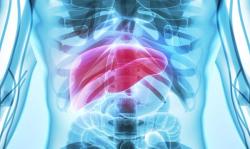
OR WAIT null SECS
Handgrip Strength, Other Factors Could Signal Increased Hospitalization Risk in IBD
Results from the study found independent associations between handgrip strength, abPG-SGA, and SaskIBD-NRT with risk of IBD-related hospitalization, further noting clinical frailty scale and subjective global assessment were not associated with risk of hospitalization.
Reduced handgrip strength and increased abridged patient-generated subjective global assessment (abPG-SGA) and Saskatchewan Inflammatory Bowel Disease Nutrition Risk Tool (SaskIBD-NRT) scores are independently associated with inflammatory bowel disease (IBD) related hospitalizations, according to findings from a prospective study.
“To date, population-based health administrative data is utilized in most studies exploring the relationship between the multifaceted components of frailty and adverse IBD outcomes. The use of data in this form is subject to misclassification bias and fails to adequately account for disease severity,” wrote investigators.1 “Therefore, there is a need in the IBD population to design prospective studies to provide a more robust association between frailty and its determinants with adverse clinical outcomes.”
Patients with ulcerative colitis (UC) or Crohn disease (CD) commonly develop conditions outside of the gastrointestinal tract, including anemia, mouth sores, arthritis, osteoporosis, skin conditions, liver conditions, and cancer. IBD complications can also cause constipation, pain, fatigue and weight loss.2
To further explore the association between the clinical frailty scale, handgrip strength, and malnutrition with IBD-related hospitalizations and surgeries, a team of investigators led by Katherine Bedard, of the department of medicine at the University of Alberta, and senior author Farhad Peerani, MD, assistant professor of medicine at the University of Alberta in Edmonton, Alberta, Canada, prospectively enrolled patients with IBD diagnosed with UC or CD at 2 ambulatory care clinics in Alberta, Canada. Patients older than 18 years of age with an IBD disease duration greater than 3 months at the time of enrollment were included in the study irrespective of clinical disease activity. Investigators excluded patients who had a major medical comorbidity, previous colectomy, current pregnancy, or were unable to provide informed consent in English.1
In total, 161 patients were included in the study and were followed until their last bloodwork, endoscopy, or clinic visit. This cohort had a mean follow-up of 43.9 (Standard deviation [SD], 10.1) months, a mean age of 42.2 (Sd, 15.9) years at baseline, and 50.9% were female. Investigators noted most patients were on biologics (72.7%) and in clinical remission, with 65% of the CD (mean Harvey-Bradshaw index score, 3.7 [SD, 3.9]) and 35% of the UC cohort (mean pMayo score, 1.3 [SD, 1.8]) meeting criteria for remission.1
Investigators pointed out multiple differences between patients with UC and CD, including the mean age (38.4 years and 44.2 years, respectively; P = .03), disease duration (120.1 months and 169.8 months, respectively: P = .03), immunomodulator use (35.7% and 48.6%, respectively; P = .01), and current exposure to biologics (60.7% and 79.0%, respectively; P = .04). Baseline characteristics of frailty, dynapenia, malnutrition, and malnutrition risk were similar between those with UC and CD.1
The primary outcome of interest for this study was IBD-related hospitalizations and the secondary outcome was IBD-related surgeries. Investigators used univariable and multivariable logistic regression and Cox models to assess the impact of the exposures on the outcome. Exposures were adjusted for age, sex, disease phenotype, disease activity, exposure to biologics, exposure to steroids, previous IBD-related surgeries, and presence of comorbidities.1
Upon analysis, 27 patients (16.8%) experienced at least 1 IBD-related hospitalization. Of these hospitalizations, 14 were for disease flare, 10 were for IBD-related surgery, and 3 were for infection. Hospitalizations occurred among 5 patients with UC and22 patients with CD.1
Results suggested reduced hand grip strength was independently associated with an increased risk for IBD-related hospitalizations (adjusted hazard ratio [aHR], 3.96; 95% CI, 1.12–14.07; P = .03). Investigators noted the abPG-SGA (aHR, 1.07; 95% CI, 1.01–1.14; P = .03) and the SaskIBD-NRT (aHR, 1.36; 95% CI, 1.05–1.77; P = .02) were also associated with hospitalization risk.1
Further analysis revealed clinical frailty scale was not associated with IBD-related hospitalizations when used either ordinally (aHR, 0.97; 95% CI, 0.66–1.43; P = .87) or categorically (aHR, 1.34; 95% CI, 0.44–4.09; P = .61). Subjective global assessment also was not associated with IBD-related hospitalizations (aHR 0.81; 95% CI, 0.28–2.35; P = .69).1
Investigators pointed out 13 patients, 2 with UC and 11 with CD, underwent IBD-related surgeries. No variable of interest was independently associated with IBD-related surgeries.1
“This is the first study with long-term follow-up to report significant independent associations between HGS, the abPG-SGA, and the SaskIBD-NRT with IBD-related hospitalizations in an outpatient population,” concluded investigators.1 “While it is important to not only validate existing assessments and screening tools of frailty and its determinants in patients with IBD, the research community should also move forward to develop IBD-specific frailty tools to help clinicians better navigate care for the entire IBD population regardless of age.”
References:
- Bedard K, Taylor L, Rajabali N, et al. Handgrip strength and risk of malnutrition are associated with an increased risk of hospitalizations in inflammatory bowel disease patients. Therapeutic Advances in Gastroenterology. 2023;16. doi:10.1177/17562848231194395
- Crohns and Colitis. Complications and Extraintestinal Manifestations. IBD Journey. Accessed September 8, 2023. https://crohnsandcolitis.ca/About-Crohn-s-Colitis/IBD-Journey/Complications-and-Extraintestinal-Manifestations
Related Content:


